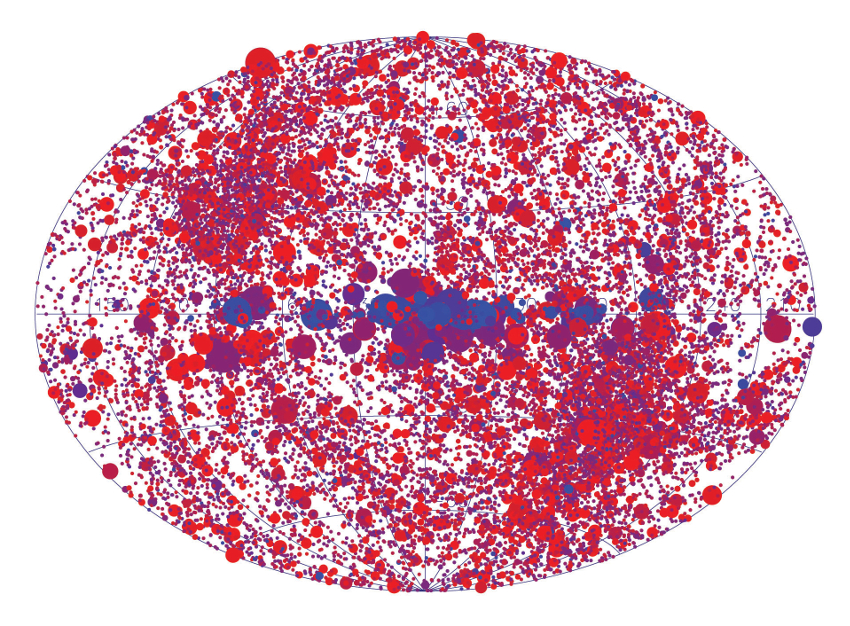
 Credit: ESA/XMM-Newton/ R. Saxton / A.M. Read (CC BY-SA 3.0 IGO)
Credit: ESA/XMM-Newton/ R. Saxton / A.M. Read (CC BY-SA 3.0 IGO)
Seen in Passing
The ability to observe stars and galaxies from space is a precious resource. Given the large cost of space observatories, astronomers and mission planners want to make the most efficient use of observing time. Spacecraft observatories spend significant time moving from one target to another, and this time can be used quite effectively to observe objects as the telescope slews. Since the telescope is moving, individual sources appear as streaks in the X-ray images and must be carefully reconstructed. The image above shows a map of X-ray emitting sources observed during slews by the XMM-Newton X-ray Observatory from 2001 through 2014. During these slew times, XMM-Newton has detected more than 70,000 sources, which is about 10 percent of the total number of sources detected by XMM-Newton, and about a factor of 20 more sources than detected in the first XMM-Newton slew survey. The image above shows 30,000 of these sources detected in 2,114 individual slews. In this map, sources that emit lower-energy X-rays are red, higher energy sources are blue, and the size of the sources are proportional to the brightness of the source. Using these slew data, XMM-Newton has observed more than 80 percent of the entire sky.
Published: May 22, 2017
<
HEA Dictionary ● Archive
● Search HEAPOW
● Other Languages
● HEAPOW on Facebook
● Download all Images
● Education ● HEAD
>

Each week the HEASARC
brings you new, exciting and beautiful images from X-ray and Gamma ray
astronomy. Check back each week and be sure to check out the HEAPOW archive!
Page Author: Dr. Michael F. Corcoran
Last modified Monday, 26-Feb-2024 17:37:05 EST


